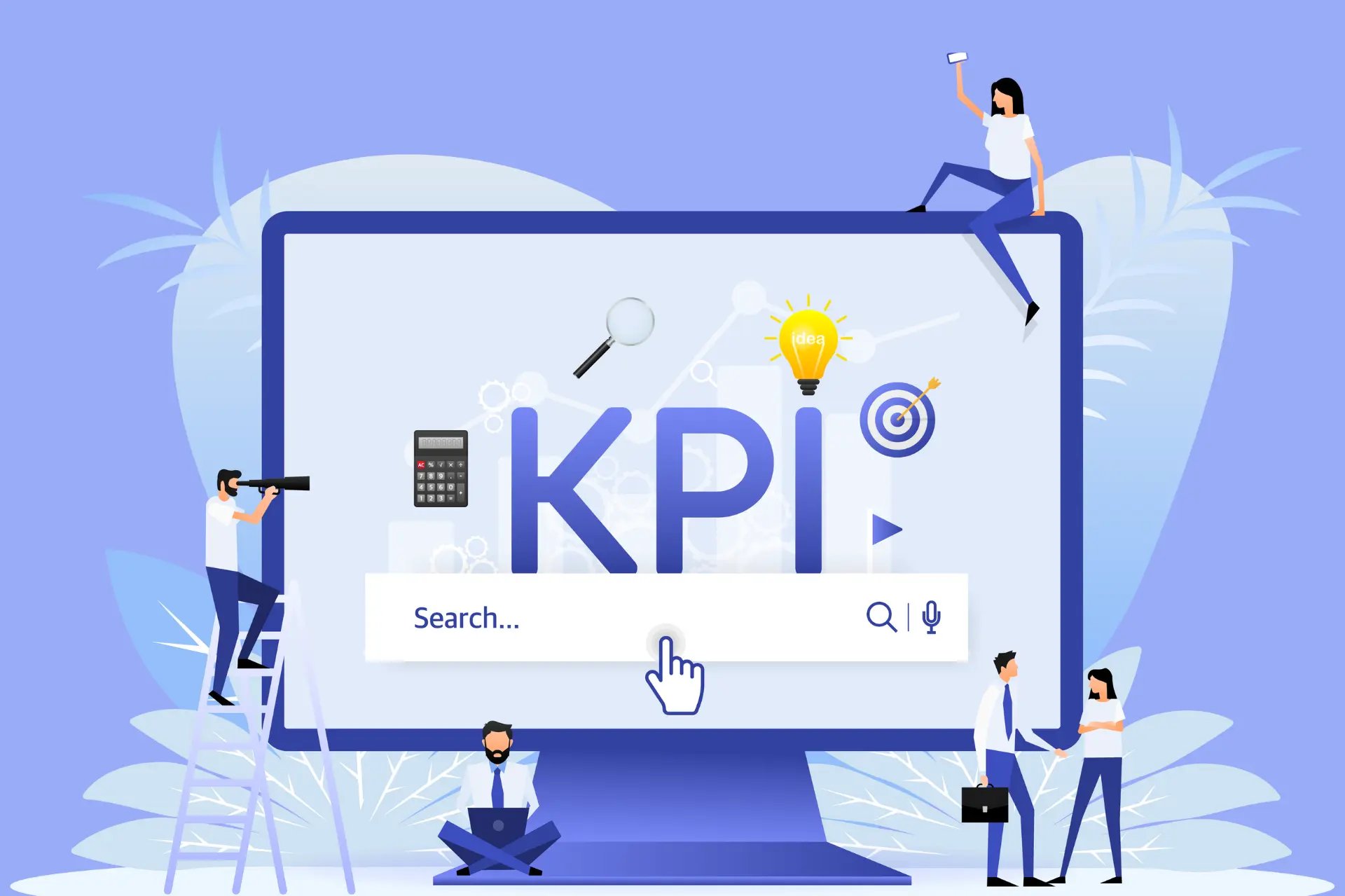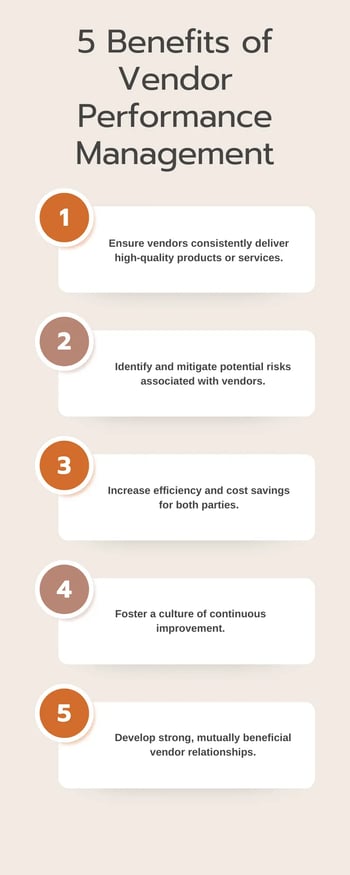
How To Measure And Manage Vendor Performance
Content
- What is vendor performance management?
- How do you measure vendor performance?
- How does Dock 365 help with vendor performance management?
- Conclusion
Any organization needs dependable vendors to run its operations smoothly. We sift through hundreds of options during procurement to find the best one for the job. How confident are we that we will receive the best performance possible throughout the arrangement? Although the vendor agreement specifies it, there’s no guarantee. That’s up to the business to ensure by continuously tracking the vendor's performance.
Organizations can make sure they always get the best deal possible with the help of vendor performance management. It helps to eliminate draining agreements or failing vendors from their process to improve their bottom line. Here’s a detailed post on how to go beyond tracking deadlines and spending limits to measure and manage vendor performance accurately.
What is vendor performance management?
Vendor performance management is evaluating a vendor or supplier’s activities, services, and products to determine how well they meet the agreed-upon standards, requirements, and expectations. When organizations have countless suppliers and factors that affect their conduct, thoroughly measuring individual vendors can be straining. Fortunately, the newest technology automates all laborious steps, including obtaining, processing, and reporting vital data.
Organizations often use key performance indicators (KPIs) and other metrics to measure and track vendor performance. Effective vendor performance management helps organizations make informed decisions about continuing or modifying their relationships with specific vendors, ultimately contributing to their overall success.
- Performance Metrics and KPIs: Establish key performance indicators (KPIs) and other metrics to measure and evaluate vendor performance. These metrics may include quality, timeliness, cost-effectiveness, and compliance.
- Service Level Agreements (SLAs): Defining clear and measurable SLAs in contracts to set expectations regarding the quality and timeliness of the products or services to be delivered by the vendor.
- Regular Performance Reviews: Conduct regular reviews or assessments of the vendor's performance, often through meetings or reports. These reviews provide an opportunity to discuss performance, address any issues, and identify areas for improvement.
- Contract Management: Ensure contractual agreements are comprehensive, enforceable, and aligned with the organization's objectives. It includes incorporating provisions for performance measurement and improvement.

How do you measure vendor performance?
Setting up specific metrics to measure performance is integral to vendor management. Organizations usually depend on Key Performance Indicators (KPIs) to evaluate various aspects of a vendor's activities. These KPIs help organizations monitor and assess performance, identify areas for improvement, and ensure vendors meet or exceed expectations.
When implementing KPIs for vendor performance measurement, it's important to customize them based on the specific industry, type of products or services, and the organization's strategic goals. Regularly reviewing and adjusting KPIs enables businesses to ensure relevancy and alignment with their evolving needs. Here are some common categories of KPIs for measuring vendor performance:
-
Quality Metrics
The quality of the product or service is a relevant indicator of the vendor’s performance. Organizations can gauge that using the defect rate or the supplier’s conformance to specifications. The defect rate is the proportion of subpar or defective goods or services that the vendor delivers. Conformance to specifications is the extent to which the vendor's products or services meet the agreed-upon requirements.
-
Timeliness and Delivery Metrics
In the business world, time is money, so organizations prioritize a vendor's timeliness and reliability. Businesses can evaluate that using performance indicators such as on-time delivery and lead time. They can monitor the proportion of orders or deliverables that arrive on time or ahead of schedule. Lead time refers to the time it takes for the vendor to fulfill an order or deliver a service from the time of request.
-
Cost-Effectiveness Metrics
A company's future depends critically on how its suppliers' goods and services impact its bottom line. Due diligence on the cost-effectiveness of vendors is therefore necessary for organizations. Cost variance is the difference between the estimated and actual cost of products or services. The total cost of ownership (TCO) is the overall cost of acquiring and maintaining products or services, including initial, operational, and hidden costs.
-
Communication and Responsiveness Metrics
Continuous communication between the company and vendor is essential for a mutually beneficial relationship. Tracking response time and communication efficiency can help assess vendor performance. Response time is the time it takes for the vendor to respond to inquiries, issues, or requests for information. Organizations should also evaluate the clarity and effectiveness of communication between the vendor and the buying organization.
-
Compliance Metrics
Depending on third-party vendors, suppliers, manufacturers, or service providers can expose a business to risks. Hence, monitoring compliance metrics is essential to safeguarding businesses against vendor risks. Regulatory compliance guarantees that the vendor complies with pertinent laws, rules, and industry guidelines. Contractual compliance helps verify that the vendor follows the terms and conditions specified in the contract or Service Level Agreement (SLA).
-
Continuous Improvement Metrics
Regular improvement in a business relationship requires contributions from all the involved parties. Organizations must assess how their vendor selection will add value to their business over time, apart from the immediate advantages. They must evaluate the vendor's ability to bring new ideas, technologies, or improvements to products or services. Also, measure the vendor's commitment to identifying and implementing continuous improvement initiatives.
-
Customer Satisfaction Metrics
Customer feedback is an important KPI to gauge a vendor’s performance. It involves collecting and analyzing feedback from internal stakeholders and end-users regarding their satisfaction with the vendor's performance.
Organizations can track the net promoter score (NPS) to measure the likelihood of customers recommending the vendor's products or services.
-
Risk Management Metrics
Several external factors, including competition, the state of the economy, and the political and legal landscape, affect the success of the delivery of goods and services. Hence, businesses must evaluate the vendor's efforts to identify and mitigate potential risks that could impact performance. They must assess the vendor's plans for maintaining operations during disruptions.
How does Dock 365 help with vendor performance management?
Organizations require real-time access to vendor activities, contract lifecycles, and two-way communication channels to measure and manage performance throughout the business relationship. It’s easier said than done when companies depend on multiple platforms to carry out various aspects of business operations. Fortunately, Dock enables businesses to bridge the gap between procedures, teams, and data through a centralized system to handle the entire vendor management process.
1. Vendor Scorecard
Vendor scorecards are tools to evaluate and measure the performance of suppliers or vendors. These scorecards aid in assessing the degree to which vendors fulfill specific requirements and performance standards. The aim is to guarantee that suppliers provide products or services consistent with the organization's standards and goals. Companies can grade vendors based on customer service, cost, quality, and timeliness.
2. Self-service Portal
Dock’s self-service portal allows vendors or suppliers to access and manage their information and transactions with a company or organization. The primary purpose of a vendor self-service portal is to streamline and automate the procurement and vendor management processes. Through the portal, vendors can create and maintain profiles, track their orders in real-time, manage order fulfillment, and update order statuses. Dock also enables vendors to submit electronic invoices, check the status of invoices, and track payment information.
3. Pre-approved Templates
Mandating it in the contract is one way to ensure that vendors perform better throughout the relationship. Most companies create service-level agreements to specify requirements for their suppliers and vendors, including timeliness, performance standards, and quality. Dock makes the job easier for businesses to draft and serve SLAs with our rich selection of contract templates and clause library. Organizations can create and store pre-approved templates for every requirement and performance standard to regularize contracts across the board. It also ensures businesses don’t lose sight of their needs while accelerating vendor onboarding.
4. Vendor Questionnaire
Dock provides vendor questionnaires for businesses to gather information about a potential or current vendor. It assesses various aspects of the vendor's capabilities, reliability, and suitability to meet the needs of the business. A vendor questionnaire typically covers the vendor's financial stability, experience, quality control processes, ethical practices, compliance with regulations, and other relevant factors. It helps businesses make informed decisions when selecting or evaluating vendors.
5. CMS and ERP Integration
Dock contract management software seamlessly integrates with ERP systems like Business Central and NetSuite, where organizations generally handle their vendors. This integration allows for a two-way flow of information between the contract management software and the ERP system. Vendor-related data, contract details, and performance metrics can be centralized, reducing data silos and ensuring accuracy and consistency across the organization. Thus, businesses can extract relevant data for performance measurement and reporting.
6. Advanced Reporting
Effective reporting helps organizations manage their vendor performance more efficiently. Dock documents and communicates information related to contractual agreements between vendors and businesses through detailed reports. The specific details included in contract reports may vary depending on the nature of the agreement, industry standards, and regulatory requirements. However, it provides a real-time and accurate view of key performance indicators like vendor risk, value, compliance, and more. Businesses can generate custom reports based on predefined criteria to monitor vendor performance.
7. Custom Dashboards
Dock’s contract management dashboards provide a visual and centralized overview of the vendor management process, including the contract lifecycle. Organizations can utilize these customizable dashboards to ensure real-time and accurate information regarding vendor performance is readily available to stakeholders. They can aggregate performance metrics and key performance indicators (KPIs) related to vendors, suppliers, and manufacturers in a specific dashboard.
Conclusion
Effective vendor performance management contributes to a more strategic and efficient supply chain. It reduces risks and enhances the overall competitiveness of the organization. Measuring and managing vendor performance is a dynamic process. It requires ongoing attention and collaboration between the buying organization and its vendors. Integrating CMS and ERP systems enables businesses to monitor various aspects of the vendor's activities and foster a collaborative relationship to drive continuous improvement. Dock offers this and much more to optimize vendor performance management.
Schedule a live demo with our experts to explore how Dock contract management software can benefit your business.
Book a Live demo
Schedule a live demo of Dock 365's Contract Management Software instantly.
.png?width=196&height=196&name=MicrosoftTeams-image%20(24).png)
Written by Deepti Gopimohan




